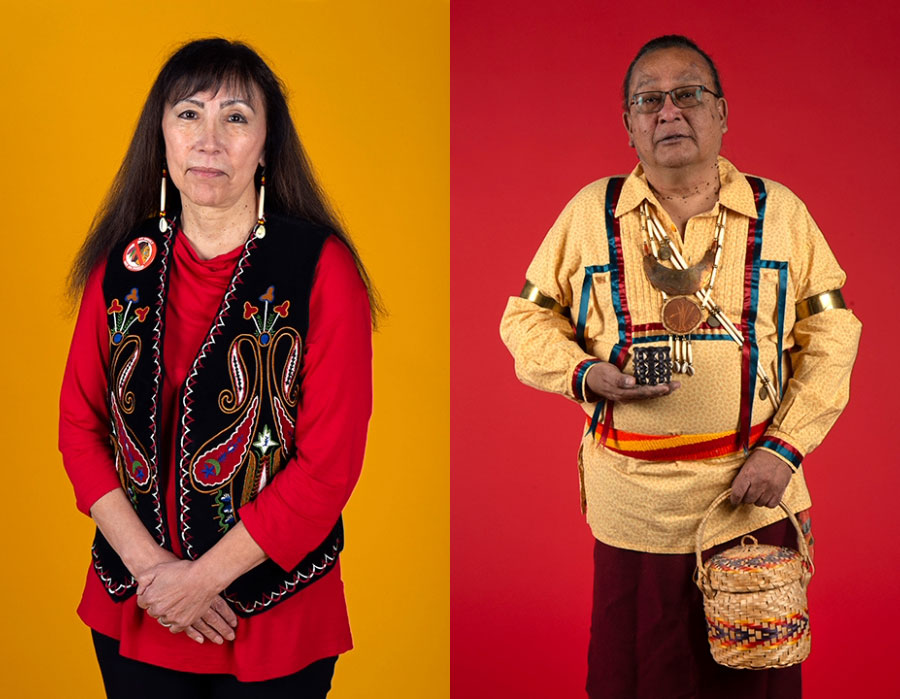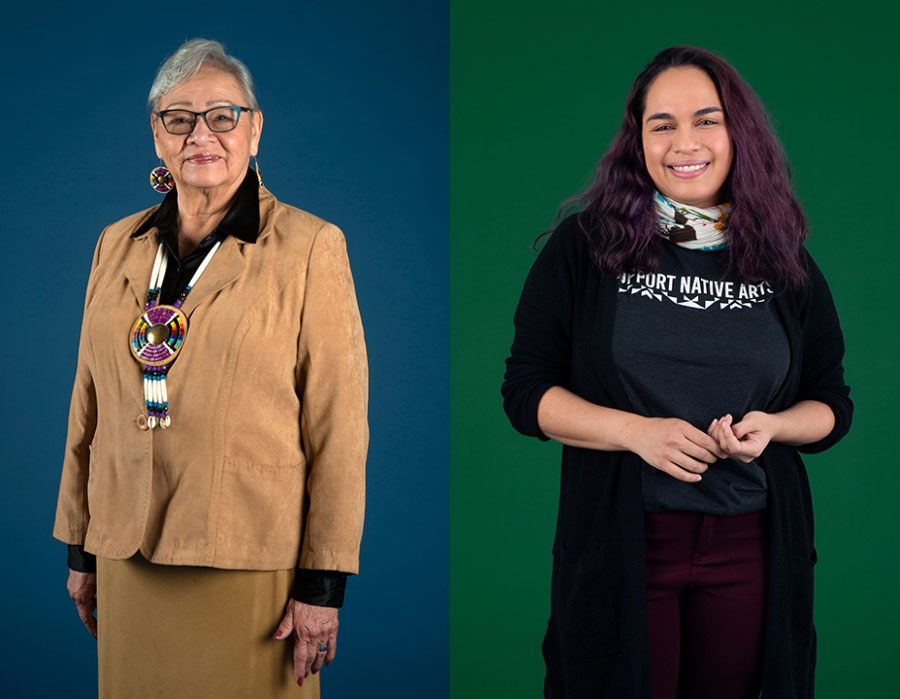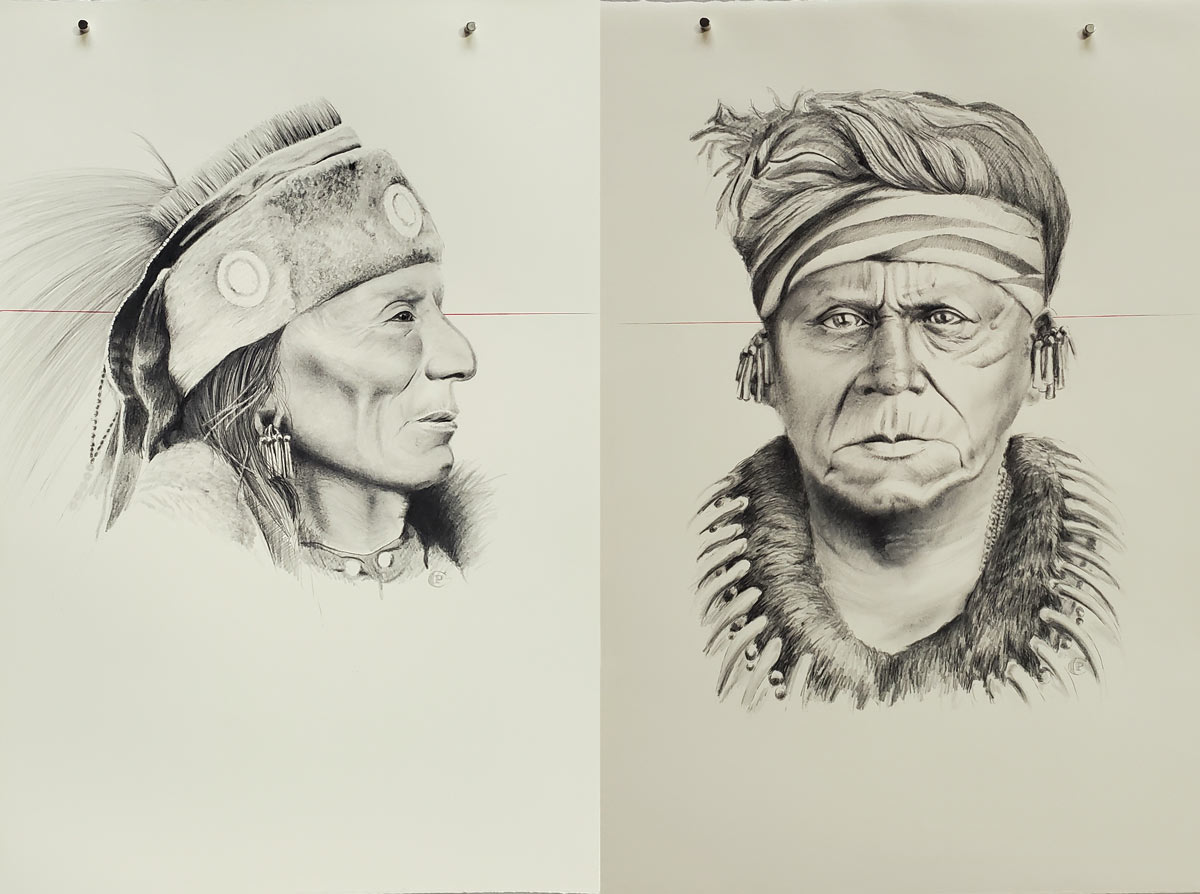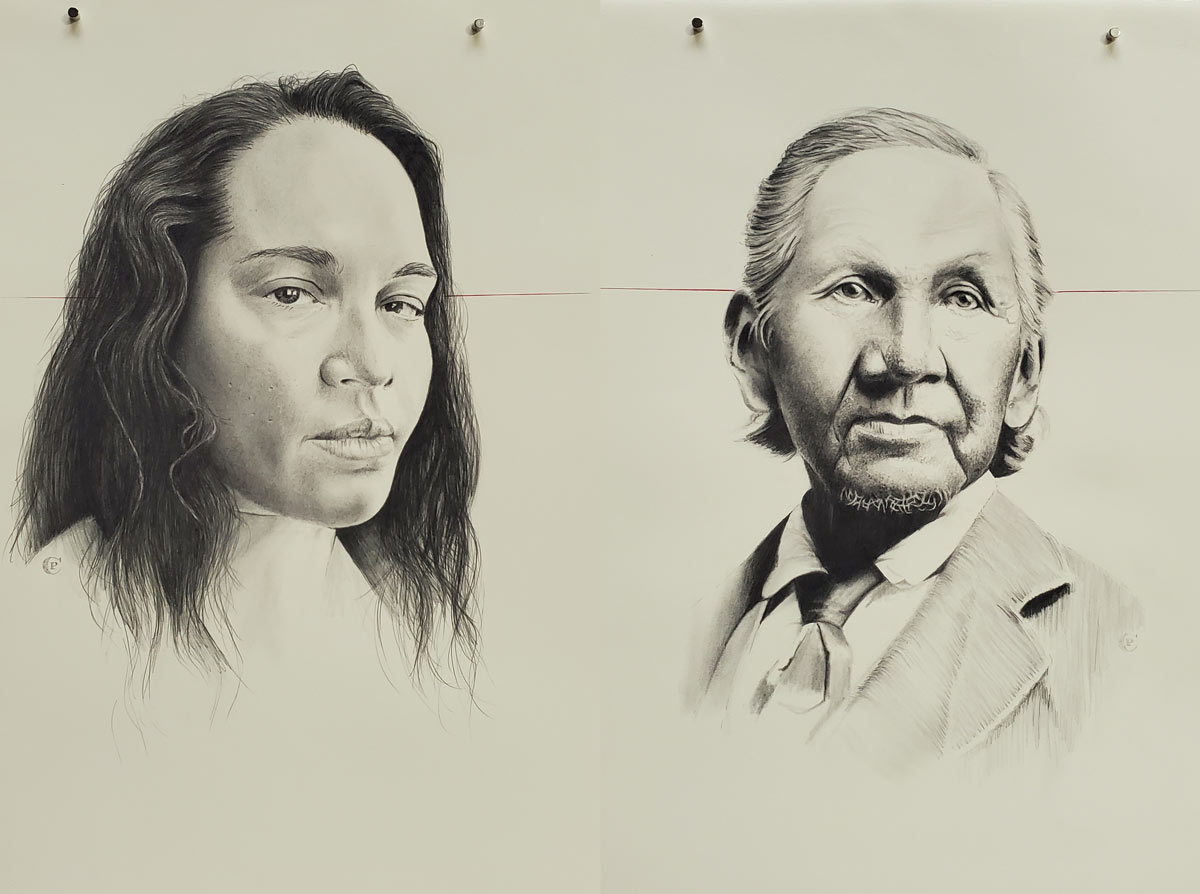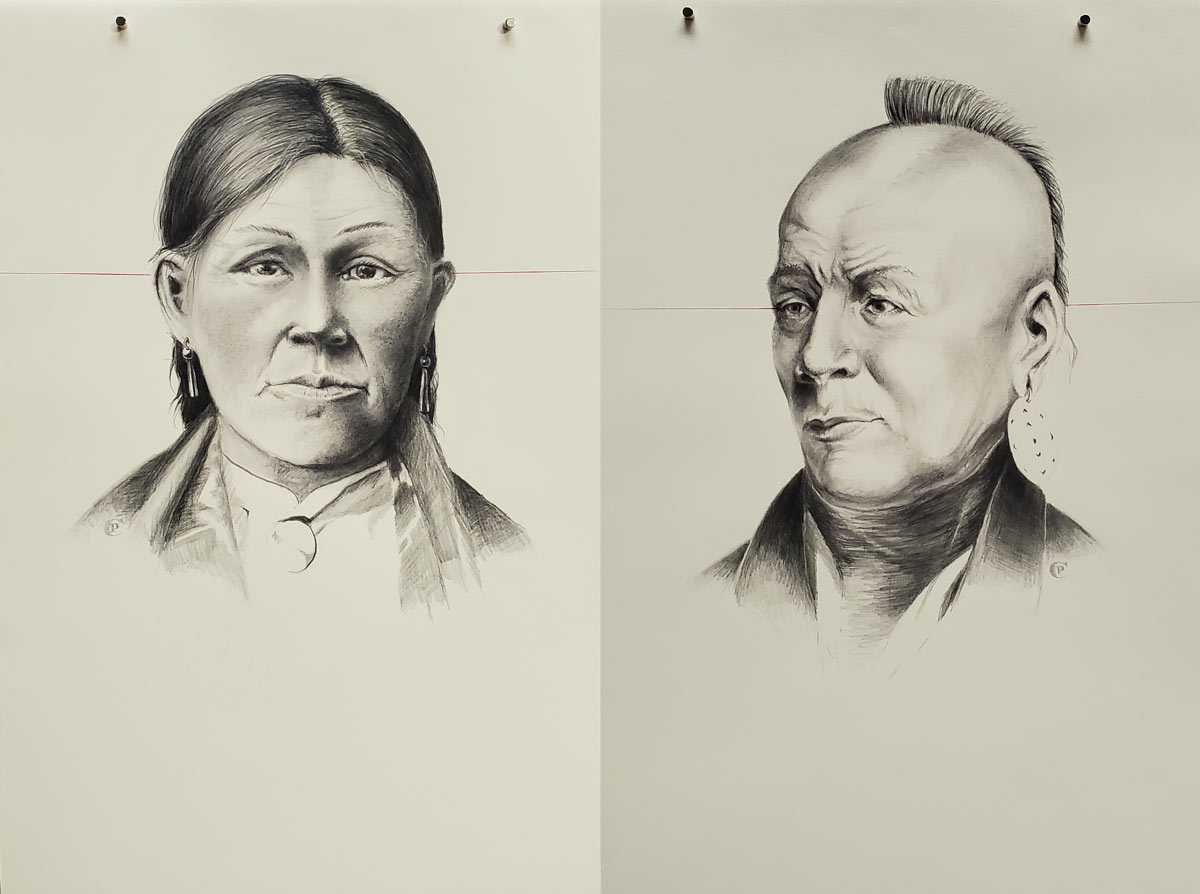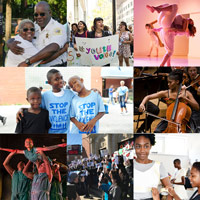Titled in Potawatomi language and in English, “Nwi Yathmomen, We will tell our story.” is an intervention informed and led by Native leaders in MacArthur’s headquarters that shows the continued presence, resilience, and vibrancy of Native peoples.
John Palfrey, President, MacArthur Foundation
MacArthur’s Chicago headquarters, the Marquette Building, is situated on the lands of the Potawatomi people. But the architecture of the Marquette Building perpetuates a harmful, stereotypical narrative about the Native people who stewarded this land before many were forced out by non-Native settlers. A new intervention, informed and led by Native leaders, asserts the continued presence, resilience, and vibrancy of Native peoples in Chicago and the Midwest.
The title of the intervention is in Potawatomi language and English translation: “Nwi Yathmomen, We will tell our story.” Curated by visual artist Andrea Carlson (Ojibwe) and historian John Low (Pokagon Band of Potawatomi), the material in the arcade of the Marquette Building addresses the representation of Native people in the architectural design elements of the building and asserts the presence of Native peoples, and particularly Potawatomi people, in Chicago.
The space now features art by Native artists, and highlights Native stories, language, and design. Chris Pappan, a Chicago-based artist of Kaw, Osage, and Cheyenne River Sioux heritage, composed portraits of Native leaders from Chicago’s history—some of whom are misrepresented in bas reliefs over each elevator door in the building’s lobby, bronze plaques featuring three dimensional portraits of historical and imagined figures. And Tom Jones, a Ho Chunk artist based in Wisconsin created photographic portraits of individuals in the present-day Native community. Bmejwen Kyle Malott, a Potawatomi speaker and citizen of the Pokagon Band of Potawatomi, provided language guidance in the exhibit. And we worked with Seven Generations Architecture + Engineering (7GAE), a Bodwé Professional Services company owned by the Pokagon Band of Potawatomi, to design the exhibition which draws inspiration from Potawatomi architecture, art, and design.
We invited a few people who helped lead the project to share their experience and reflections on the process, relationships that were nurtured, and the impact of the intervention. And we invite those who find themselves in the Chicago area to visit this installation on the first floor of the historic Marquette Building.
John N. Low, PhD
Pokagon Band of Potawatomi, Professor and Director of the Newark Earthworks Center at the Ohio State University.
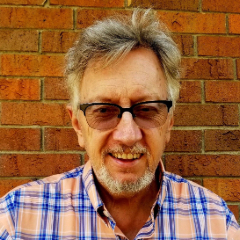
Chicago sits on lands of the First Peoples, the original inhabitants of Zhegagoynak—the name the Potawatomi gave to this region. The MacArthur Foundation headquarters are located in the Marquette Building, named after a Jesuit missionary who came to the area in the late 1600’s. The grand entrance of this historic building is a celebration of settler-colonialism featuring Tiffany glass mosaics and bronze bas reliefs. It presents the all-too-common metanarrative of celebratory conquest, leaving out much about the Indigenous peoples present. Where featured, we are ornamentation. The entrance dazzles and is a victory dance of the civilized over the savage. But that is not how we see settler colonialism today. There is no battle of good over bad. Instead, today we see what happened here as a strand in the complex story of what happens when peoples with different lifeways and values crash into each other. The impacts, effects, and legacies are often tragic. And so it was here.
The MacArthur Foundation reached out to Andrea, an artist and a citizen of the Grand Portage Band of Ojibwe, and me, a historian, past resident of Chicago, and citizen of the Pokagon Band of Potawatomi, to curate in the building’s first floor lobby a counterweight to the one-sided party in the grand entry. The result is the intervention “Nwi Yathmomen, We will tell our story.” I am very proud of it.
In this exhibit we show how sophisticated and civilized the Native peoples of Chicago were at the time of contact.
In this exhibit we show how sophisticated and civilized the Native peoples of Chicago were at the time of contact. Native peoples have always been a part of the city’s story. Through the intervention, we provide a more historically accurate presentation of the peoples of Chicago from Indigenous perspectives. I greatly enjoyed working with Andrea and have made a new friend. I also enjoyed working with the project team from MacArthur, the artists, the designers and fabricators, including 7GAE, and everyone else who contributed to making this vision a reality. I take immense pride in my contribution to the exhibit, and it was a wonderful opportunity to work with good people on a great project that is one of the highlights of my professional career.
Chris Pappan
Chris Pappan is a Chicago-based artist of Kaw, Osage, and Cheyenne River Sioux heritage.
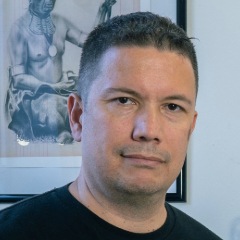
The legacy of Indigenous representation in Zhegagoynak is one of fantasy, misunderstanding, and a deliberate disregard for honesty. The Marquette Building’s ornamentation is a monument to that legacy and a definitive example of cognitive dissonance; the vibrant color and overt skill of the mosaics overshadowed by the lack of empathy and accuracy for the subject matter and Indigenous experience.
The bronze portrait reliefs of various Native leaders throughout the lobby attest to conquest, thus demonizing important leaders from our communities. Just as the artist who created these reliefs worked from photographs, I too have used historic and contemporary photos and portraiture as reference points to create more approachable and compassionate representations. Some are transcribed directly from the reference source while others have been composited and imagined, hoping that the spirit of the ancestor has been channeled into the drawing. By reappropriating the Euro-American, colonial gaze these leaders can now be regarded as activists and thinkers, as parents and grandparents.
This opportunity to provide an Indigenous perspective in this context is certainly long overdue, but I am grateful to have had the chance to reinforce the delicate humanity of these ancestors; to bring dignity to these leaders that had to make agonizing decisions and profound sacrifices for our existence.
Elizabeth Kane
Managing Director, Core Services, MacArthur Foundation
In 2019, members of the Native community and several MacArthur Staff raised concerns about the portrayal of Native peoples and cultures in the Marquette Building. As the owners of the historic building, the Foundation decided to refresh an outdated lobby exhibit and address the narrative portrayed throughout and intervene in the harms they cause. To lead the project, we convened a working group of eleven Staff members from Administrative Services, Communications, Finance, Programs, and Information Services, and Programs, with me as Executive Sponsor from our Leadership Team.
Together, we decided that the end product needed to be an intervention, not an exhibition.
Early on, the Staff-led working group realized such an exhibit would necessitate that we build relationships with Native American experts, listen to them, and learn their stories. Through conversations with co-curators Andrea and John and an advisory group of Native American leaders the Staff working group felt called to raise the ambition of the project and ultimately cede the space for Native Americans to tell their story in our building. Together, we decided that the end product needed to be an intervention, not an exhibition. We are grateful for the lessons we learned, our curators and advisors, and the meaningful relationships we built through the process.
The new installation creates an opportunity for our Native partners to reclaim their narrative. Our hope is that visitors find inspiration in and learn from the intervention.
Visit the Intervention
“Nwi Yathmomen, We will tell our story.”
Location:
Ground floor of the Marquette Building in Chicago; 140. S. Dearborn St.
Hours: When the building lobby front doors are open, 7 a.m. – 7 p.m. every day, with rare exceptions.
Call to confirm if planning for a large group, 312-422-5500.





